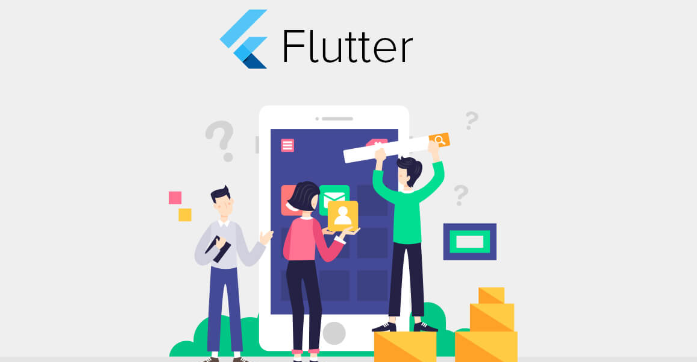一文带你深入分析Flutter Widget
原创
完整代码
import 'package:english_words/english_words.dart';
import 'package:flutter/material.dart';
import 'package:provider/provider.dart';
void main() {
runApp(MyApp());
}
class MyApp extends StatelessWidget {
const MyApp({super.key});
@override
Widget build(BuildContext context) {
return ChangeNotifierProvider(
create: (context) => MyAppState(),
child: MaterialApp(
title: 'Namer App',
theme: ThemeData(
useMaterial3: true,
colorScheme: ColorScheme.fromSeed(seedColor: Colors.deepOrange),
),
home: MyHomePage(),
),
);
}
}
class MyAppState extends ChangeNotifier {
var current = WordPair.random();
var title = "Hello Flutter";
void getTitle() {
title = "Hello Flutter , I learn Mobile env";
print(title);
notifyListeners(); //通知 watch widget 更新
}
}
class MyHomePage extends StatelessWidget {
@override
Widget build(BuildContext context) {
var appState = context.watch<MyAppState>();
return Scaffold(
body: Column(
children: [
Text('A random idea:'),
Text(appState.current.asLowerCase),
Text(appState.title),
ElevatedButton(
onPressed: () {
// print('button pressed!');
appState.getTitle();
},
child: Text('Next'),
),
],
),
);
}
}程序入口
通过 main 函数只是告知 Flutter 运行 MyApp 中定义的应用。
void main() {
runApp(MyApp());
}该函数只是告知 Flutter 运行 MyApp 中定义的应用。
构建 Widget 结构
MyApp 类扩展 StatelessWidget。在构建每一个 Flutter 应用时,widget 都是一个基本要素。如您所见,应用本身也是一个 widget。
MyApp 中的代码设置了整个应用,包括创建应用级状态、命名应用、定义视觉主题以及设置“主页” widget,即应用的起点。
class MyApp extends StatelessWidget {
const MyApp({super.key});
@override
Widget build(BuildContext context) {
return ChangeNotifierProvider(
create: (context) => MyAppState(),
child: MaterialApp(
title: 'Namer App',
theme: ThemeData(
useMaterial3: true,
colorScheme: ColorScheme.fromSeed(seedColor: Colors.deepOrange),
),
home: MyHomePage(),
),
);
}
}定义 widget 状态
我们可以定义状态类,来创建 widget 的状态 和事件通信,然后通过 状态类扩展 来更新 widget
class MyAppState extends ChangeNotifier {
var current = WordPair.random();
var title = "Hello Flutter";
void getTitle() {
title = "Hello Flutter , I learn Mobile env";
print(title);
notifyListeners(); //通知 watch widget 更新
}
}定义 widget UI
- 每个
widget都会有一个build方法,用于构建和返回 Widget 树。 每当 widget 的环境发生变化时,系统都会自动调用该方法,以便 widget 始终保持最新状态。 - MyHomePage 使用 watch 方法跟踪对应用当前状态的更改。
class MyHomePage extends StatelessWidget {
@override
Widget build(BuildContext context) {
var appState = context.watch<MyAppState>();
return Scaffold(
body: Column(
children: [
Text('A random idea:'),
Text(appState.current.asLowerCase),
Text(appState.title),
ElevatedButton(
onPressed: () {
appState.getTitle();
},
child: Text('Next'),
),
],
),
);
}
}获取上下文
通过context.watch
var appState = context.watch<MyAppState>();关于build()
@override
Widget build(BuildContext context) {
}build方法接收一个BuildContext参数,它提供了与当前 Widget 相关的上下文信息,例如父级Widget的信息、主题数据等。build方法的作用是根据当前的状态(State)和输入属性(Properties)构建并返回一个Widget树。这个 Widget 树描述了界面的结构和外观。Flutter 框架会根据这个 Widget 树来绘制界面,并在需要时进行重建和更新。- 在 build 方法中,你可以使用各种 Flutter 提供的 Widget 来构建界面,例如 Container、Text、Image 等。你还可以使用自定义的 Widget 来组合和嵌套,以创建复杂的界面布局。
除了基本的 BuildContext 参数之外,build 方法还可以接收其他参数,这些参数可以根据需要进行传递。例如,你可以将一些配置参数或回调函数作为参数传递给自定义的 Widget,并在 build 方法中使用它们来影响界面的构建过程。
build() 常用使用
- 直接返回一个 Widget,例如:
Widget build(BuildContext context) {
return Container(
// 定义容器的属性和子 Widget
);
}- 使用条件语句或循环来动态构建不同的 Widget 树,例如:
Widget build(BuildContext context) {
if (condition) {
return Text('Condition is true');
} else {
return Text('Condition is false');
}
}- 使用 Builder 模式构建复杂的 Widget 树,例如:
Widget build(BuildContext context) {
return Builder(
builder: (BuildContext context) {
// 在这里构建并返回复杂的 Widget 树
},
);
}原创声明:本文系作者授权腾讯云开发者社区发表,未经许可,不得转载。
如有侵权,请联系 cloudcommunity@tencent.com 删除。
原创声明:本文系作者授权腾讯云开发者社区发表,未经许可,不得转载。
如有侵权,请联系 cloudcommunity@tencent.com 删除。
评论
登录后参与评论
推荐阅读
目录
相关产品与服务
容器服务
腾讯云容器服务(Tencent Kubernetes Engine, TKE)基于原生 kubernetes 提供以容器为核心的、高度可扩展的高性能容器管理服务,覆盖 Serverless、边缘计算、分布式云等多种业务部署场景,业内首创单个集群兼容多种计算节点的容器资源管理模式。同时产品作为云原生 Finops 领先布道者,主导开源项目Crane,全面助力客户实现资源优化、成本控制。

